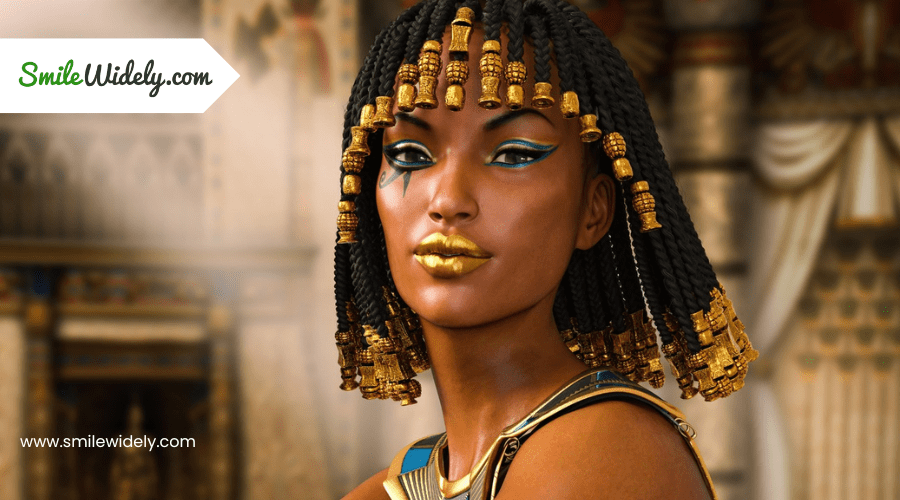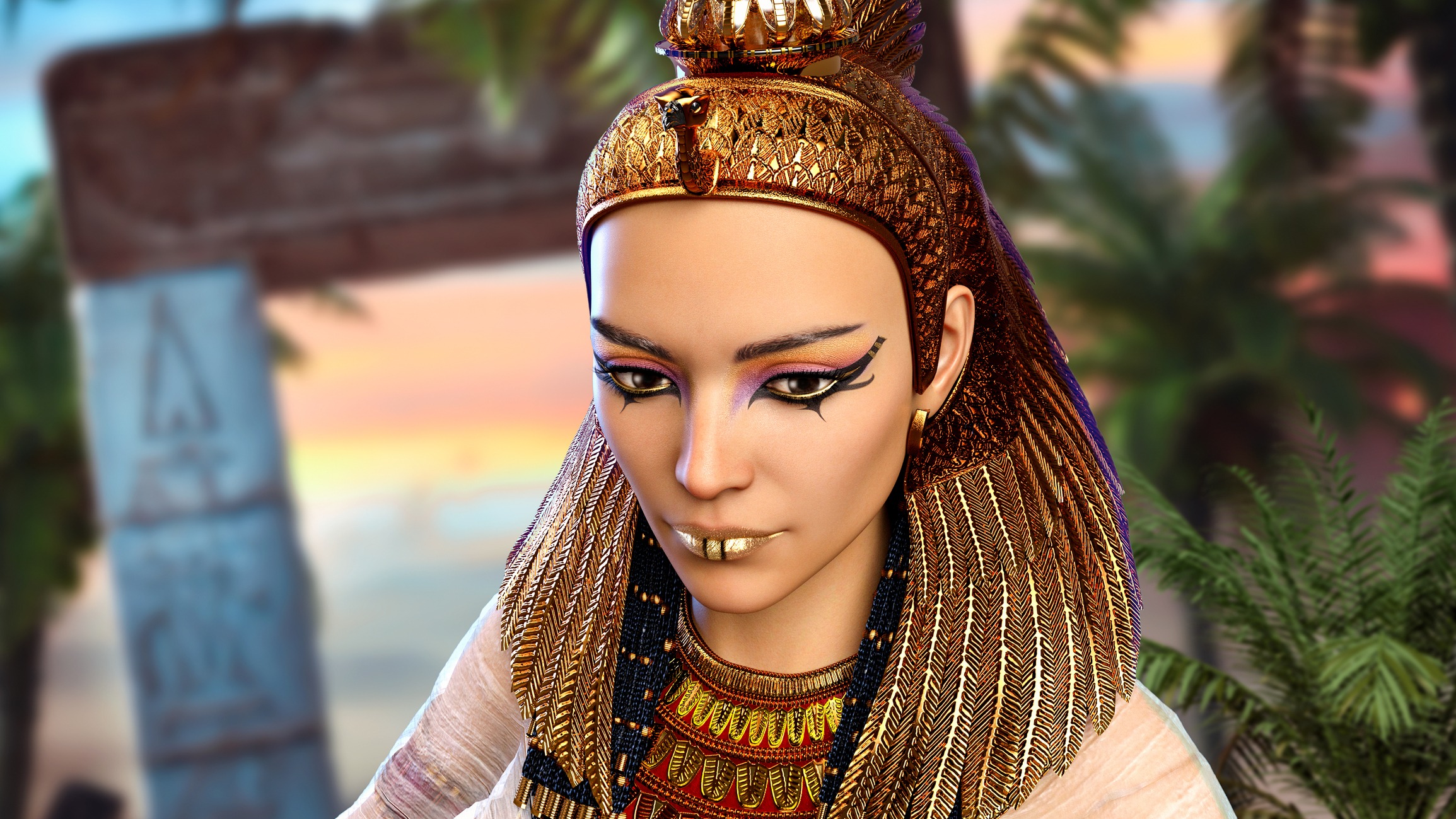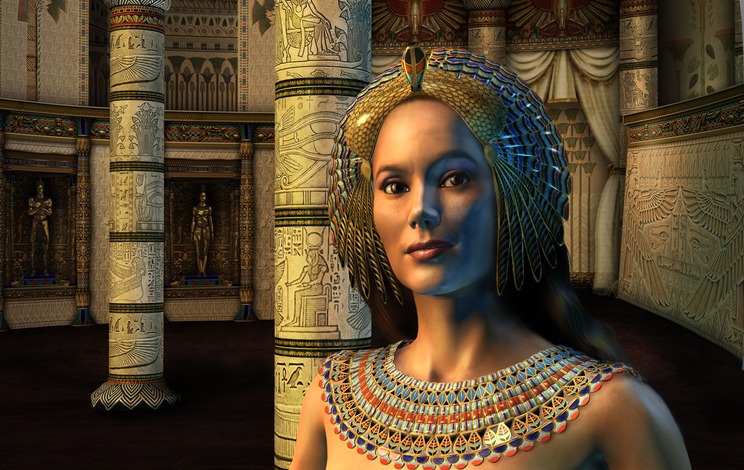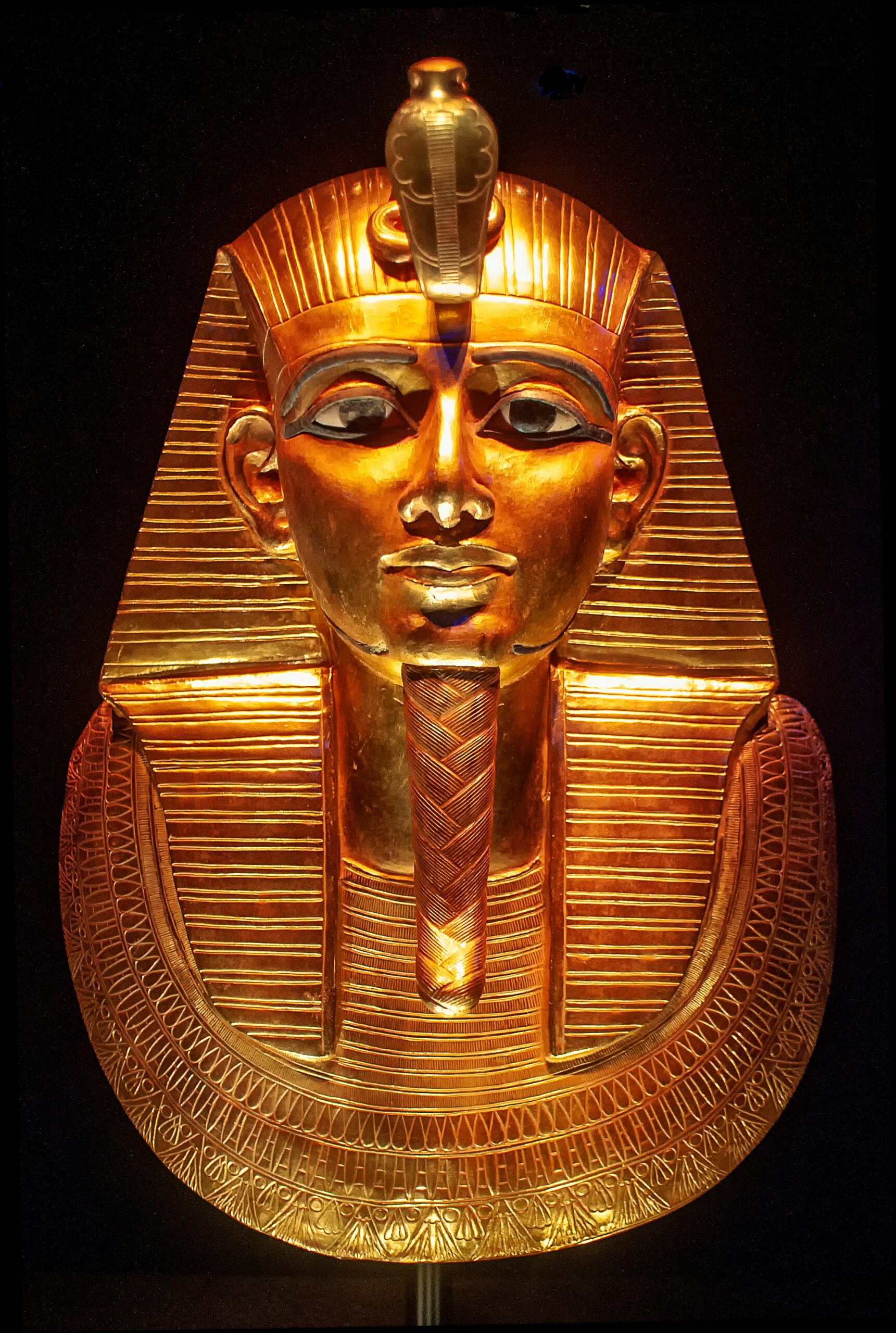Imagine stepping into a world where your lips glitter with the wealth of a thousand suns, a mere glimpse into the lavish lifestyle of ancient Egypt’s elite. As you explore the opulent beauty rituals revealed by gold dust lips, you’ll uncover not only a testament to ancient sophistication but also the intricate social hierarchies these adornments symbolized.
The luxurious mix of iron oxide red, animal fat, and even beetle powder for that vibrant Cleopatra-esque red pique your curiosity about the craftsmanship techniques and the divine connection they believed gold possessed. Let’s embark on a journey to unravel the secrets behind the gleaming allure of gold dust lips and what they tell us about the artistry and cultural significance of ancient Egyptian adornments. Why did they value gold so highly in their beauty practices, and what does this say about their society?
Historical Significance
Adorning your lips with gold dust in ancient Egyptian society wasn’t just about beauty; it symbolized wealth, luxury, and elevated social status. This practice reveals the intricate relationship between cosmetics and the cultural values of the time. In ancient Egypt, cosmetics weren’t merely for enhancing physical appearance; they were luxury goods, integral to personal adornment and the expression of identity.
Gold dust, a precious material, was meticulously applied to the lips, showcasing not only an individual’s wealth but also their access to rare and valuable resources. The use of such lavish materials highlights the importance of cosmetics in ancient Egyptian society, far beyond mere vanity. These cosmetics, stored and carried in beautifully crafted cosmetic vessels, were prized possessions, often reflecting the craftsmanship and artistic skills of the time.
The meticulous application process and the significance placed on cosmetic vessels underline the ceremonial and ritualistic aspects of personal adornment. This practice wasn’t a daily, mundane routine but a deliberate act of preparing oneself, embodying the societal values of beauty, wealth, and status. Through the lens of gold dust lips, one glimpses the sophistication and richness of ancient Egyptian culture, where cosmetics bridged the physical and the symbolic, the everyday and the divine.
Symbolism and Status
Why did gold dust lips become a symbol of unrivaled prestige and divine connection in ancient Egyptian society?
It’s simple. In a world where your appearance could dictate your place in the social hierarchy, adorning your lips with gold dust wasn’t just about luxury; it was a bold declaration of wealth and status. Imagine walking through the bustling streets of ancient Egypt, your lips shimmering with gold dust. You wouldn’t just be seen; you’d be recognized. Recognized as someone of importance, someone who not only possessed immense wealth but also wielded power and influence.
Gold dust lips were the epitome of extravagance, a luxury reserved for the elite. This wasn’t a trend for the masses; it was an exclusive adornment that set the aristocrats apart from the common folk. The use of gold dust signified not just beauty but a divine connection, enhancing one’s spiritual aura. It was believed that this lavish embellishment made you more attractive, not just to your peers, but to the gods themselves. In essence, gold dust lips weren’t merely a fashion statement; they were a testament to one’s divine favor and elevated status within society.
Beauty Rituals
In ancient Egypt, applying gold dust to one’s lips was not only a testament to beauty but also a deeply ingrained part of daily grooming rituals for the elite. This luxurious practice wasn’t just about looking good; it was a sophisticated expression of wealth, status, and adherence to cultural ideals. For both men and women, gold dust lips became an essential element of their beauty rituals, showcasing an ancient Egyptian dedication to divine beauty and perfection.
Here’s a quick glance at how gold dust transformed the concept of beauty in ancient Egypt:
| Aspect | Description |
|---|---|
| Symbol of Status | Gold dust on lips signified wealth and high social standing. |
| Gender Neutral | Both men and women indulged in this beauty practice. |
| Cultural Significance | More than a beauty trend, it was a reflection of divine association and perfection. |
These practices indicate how beauty rituals in ancient Egypt were not merely superficial but woven into the fabric of their society. The application of gold dust on lips wasn’t just about adorning oneself; it was a deeply cultural, almost sacred act, reflecting the intricate beauty standards of the time.
Divine Connection
Shifting our focus to the spiritual realm, it’s clear that gold dust lips served as a bridge to the divine in ancient Egyptian culture. This luxurious beauty trend wasn’t just about looking good; it was a deeply spiritual practice that connected the wearer to the gods. Reserved exclusively for the elite and royalty, the application of gold dust on lips was a statement of divine favor and protection, as much as it was a display of wealth and power.
Adorning one’s lips with gold dust in ancient Egypt went beyond mere personal adornment or self-expression. It was a ritual that reflected an individual’s status within the societal hierarchy, showcasing not just their earthly riches but their spiritual wealth as well. This practice was a testament to the intricate beauty rituals that were interwoven with religious beliefs in ancient Egyptian society.
The artistic application of gold dust on the lips was more than a fashion statement; it was a sacred act that symbolized a direct connection to the divine, elevating the status of the elite and royalty beyond their mortal existence to one that was blessed and protected by the gods themselves.
Gold’s Sacred Role
Gold played a pivotal role in ancient Egyptian culture, not just as a symbol of wealth and status, but as a sacred element believed to connect the physical and divine realms. The use of gold in lip adornments wasn’t merely for aesthetic appeal; it was deeply embedded in the society’s spiritual beliefs and practices. Ancient Egyptians used gold dust on their lips as a manifestation of divine beauty, reflecting the sacred significance they placed on cosmetics in ancient Egypt.
The sacred role of gold in ancient Egyptian culture can be encapsulated in the following points:
- Symbol of Divinity: Gold’s unblemished shine was associated with the skin of the gods, making it a material of choice for connecting with the divine.
- Protective Properties: Beyond aesthetics, gold dust lips were believed to offer protection and magical properties, safeguarding the wearer from harm.
- Exclusive Use: Reserved for the elite and royalty, gold dust lips highlighted the intersection of beauty, power, and spirituality, showcasing the importance of adornment.
Craftsmanship Techniques
Exploring how ancient Egyptians crafted gold dust lips reveals their remarkable skill in jewelry making. Their mastery over goldworking techniques allowed them to create pieces that were not only luxurious but also rich in cultural significance. You’ll find that the intricate craftsmanship involved techniques like embossing, engraving, and inlaying, which were foundational in producing the stunning gold dust lips.
Here’s a glimpse into the craftsmanship techniques:
| Technique | Description | Significance |
|---|---|---|
| Embossing | Raising patterns on the metal surface | Added texture and dimension |
| Engraving | Carving designs into the metal | Detailed storytelling |
| Inlaying | Inserting precious stones or metals into depressions | Enhanced visual appeal |
| Cloisonné | Using compartments to hold colored materials in place | Vivid, intricate designs |
| Granulation | Attaching small beads of gold to create textures | Delicate detailing |
These techniques weren’t just about aesthetics; they were a testament to the craftsmanship and dedication of ancient Egyptian artisans. The gold dust lips, crafted with such precision and care, were symbols of wealth, status, and beauty, reflecting the high value placed on personal adornment.
Social Hierarchies
In ancient Egypt, the application of gold dust on lips wasn’t just a beauty trend but a clear indicator of one’s place within the social hierarchy. The gleaming lips weren’t for everyone; they showcased where you stood among ancient Egyptians. If your lips sparkled with gold, you were unmistakably part of the elite, far removed from the commoners who could only dream of such luxury.
- Symbol of Wealth and Status: Gold dust lips acted as a vivid symbol of wealth and status. They weren’t merely about looking good; they declared your elite social standing for all to see.
- Exclusive to the Upper Classes: This luxurious adornment was reserved strictly for those in the upper echelons of society. It emphasized the importance of beauty and adornment in maintaining and displaying social stratification.
- Highlighting Social Divide: The inability of commoners to access such extravagant cosmetics further highlighted the deep social divide within ancient Egyptian society, underscoring the opulence and extravagance available to the elite.
Gold dust lips thus were more than a fashion statement; they were a testament to the complex social hierarchies that defined ancient Egyptian civilization, delineating the upper classes from the rest with unmistakable clarity.
Technological Innovations
The crafting of gold dust for lip adornment showcases the ancient Egyptians’ remarkable advancements in metallurgy and gold-working techniques. They didn’t just stumble upon these methods; instead, they developed sophisticated ways to manipulate metal, specifically gold, into fine dust that could be used in lip adornments. This wasn’t just about beauty; it was a display of technological prowess and artistic skill.
Here’s how they achieved such feats:
| Process | Description | Significance |
|---|---|---|
| Alloying | Mixing gold with other metals to achieve desired hardness | Allowed for finer manipulation |
| Grinding | Reducing gold into powder form | Made application on lips possible |
| Polishing | Achieving a high shine on adornments | Enhanced visual appeal |
Their ability to turn gold into dust for lip cosmetics demonstrates the intricate detailing and precision that went into creating these luxurious adornments. It wasn’t just about the glamour; it was a testament to their high level of skill and craftsmanship in jewelry making. The incorporation of gold dust highlights the cultural significance and value placed on personal adornment in ancient Egypt, showcasing not just a technological innovation, but a societal one as well.
Conclusion
The luxurious gold dust lips of ancient Egypt tell you of a society that revered beauty and status. They show you the lengths to which they’d go to symbolize their connection to the divine, using gold not just as adornment but as a sacred element.
The craftsmanship behind these adornments reveals a society advanced in technology and rich in culture. Through these intricate beauty rituals, you see a clear depiction of social hierarchies, where luxury defined one’s proximity to the gods.






